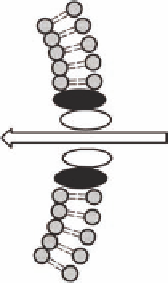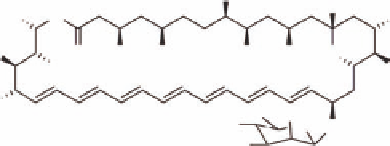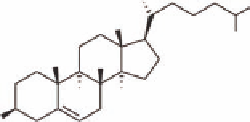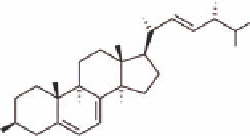Biomedical Engineering Reference
In-Depth Information
Promastigotes
enters the blood
by bites of
sandlies
Blood
Macro
phages
infected
with
amastigotes
Sandlies
become
infected
through
blood meal
Sandlies
(
Phlebotomus
)
Human
FIGURE 21.2
Life cycle of leishmania parasites: by taking a blood meal sandl ies, belonging to the genus
Phlebotomus
, introduce promastigotes into the blood. The promastigotes are phagocytized by macrophages
and converted into amastigotes in the blood cells. The amastigotes multiply in the macrophages. A sandl y
feeding on the infected person will ingest parasites and thereby conclude the cycle.
OH
Cell membrane
OH
H
3
C
O
OH
HO
O
OH
OH
OH
OH
O
COOH
CH
3
Ergosterol
H
3
C
H
3
C
H
2
N
Amphotericin B
HO
O
HO
Ca
2+
, Na
+
, K
+
lux
O
Amphotericin B
21.3
Ergosterol
Cell membrane
CH
3
H
3
C
H
3
C
CH
3
CH
3
CH
3
H
3
C
H
3
C
CH
3
H
3
C
H
3
C
H
HH
H
H
HO
HO
Cholesterol
Ergosterol
FIGURE 21.3
Mechanism of action of amphotericin B (
21.3
). The polyene region interacts with the double
bonds of ergosterol, which is found in the cell membrane of parasites. Mammalian cells contain cholesterol, in
which the presence of only one double bond causes the formation of a weaker complex with amphotericin B.
The orientation of the amphotericin B-ergosterol complexes creates an ion channel, through which an unregu-
lated l ux of small inorganic ion passes. Inability to control the concentration of inorganic ions eventually kills
a cell.

















